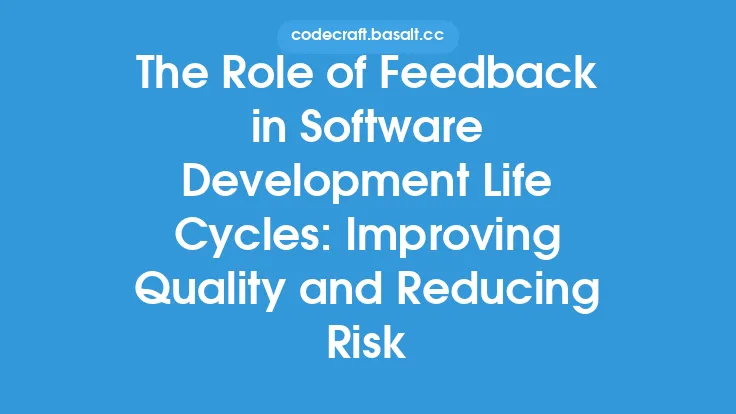In today's fast-paced software development landscape, agility and speed are crucial for delivering high-quality products to market quickly. Agile development methodologies, such as Scrum and Kanban, have become increasingly popular due to their emphasis on flexibility, collaboration, and rapid iteration. However, this accelerated development pace can sometimes come at the cost of security, as the focus on speed and functionality may lead to overlooked vulnerabilities and weaknesses. This is where security testing plays a vital role in ensuring the integrity and reliability of software applications.
What is Security Testing in Agile Development?
Security testing in agile development is an integral part of the software development lifecycle that involves identifying and addressing potential security vulnerabilities and weaknesses in the application. It is a critical process that helps ensure the confidentiality, integrity, and availability of sensitive data and prevents unauthorized access or malicious activities. In agile development, security testing is not a one-time activity but rather an ongoing process that is integrated into each iteration or sprint. This approach allows developers to identify and fix security issues early on, reducing the risk of downstream problems and ensuring that the application is secure and reliable.
Benefits of Security Testing in Agile Development
The benefits of security testing in agile development are numerous. Firstly, it helps identify and address security vulnerabilities early on, reducing the risk of downstream problems and the cost of fixing them later. Secondly, security testing ensures that the application is compliant with relevant security regulations and standards, such as PCI-DSS, HIPAA, and GDPR. Thirdly, it helps protect sensitive data and prevents unauthorized access or malicious activities, thereby safeguarding the organization's reputation and customer trust. Finally, security testing in agile development enables developers to create a culture of security awareness and responsibility, where security is everyone's concern, not just the security team's.
Challenges of Security Testing in Agile Development
Despite its importance, security testing in agile development poses several challenges. One of the primary challenges is the need for speed and agility, which can sometimes compromise the thoroughness and effectiveness of security testing. Additionally, the lack of security expertise and resources can hinder the security testing process, particularly in small or medium-sized organizations. Furthermore, the ever-evolving nature of security threats and vulnerabilities requires security testing to be continuously updated and refined, which can be a daunting task. Finally, the integration of security testing into the agile development process can be complex, requiring significant changes to the development workflow and culture.
Best Practices for Security Testing in Agile Development
To overcome the challenges of security testing in agile development, several best practices can be adopted. Firstly, security testing should be integrated into each iteration or sprint, rather than being treated as a separate phase. Secondly, automated security testing tools and techniques, such as static application security testing (SAST) and dynamic application security testing (DAST), should be used to streamline the testing process and reduce manual effort. Thirdly, security testing should be performed by a cross-functional team that includes developers, testers, and security experts, to ensure that security is everyone's responsibility. Finally, continuous monitoring and feedback should be used to refine and improve the security testing process, ensuring that it remains effective and relevant in the face of evolving security threats.
Security Testing Techniques in Agile Development
Several security testing techniques can be used in agile development, including threat modeling, vulnerability scanning, penetration testing, and security review. Threat modeling involves identifying potential security threats and vulnerabilities, and developing strategies to mitigate them. Vulnerability scanning involves using automated tools to identify potential vulnerabilities in the application, such as SQL injection or cross-site scripting (XSS). Penetration testing involves simulating real-world attacks on the application to identify vulnerabilities and weaknesses. Security review involves manually reviewing the application's code and configuration to identify potential security issues.
Tools and Technologies for Security Testing in Agile Development
Several tools and technologies are available to support security testing in agile development, including open-source and commercial options. Some popular tools include OWASP ZAP, Burp Suite, and Veracode, which provide automated security testing and vulnerability scanning capabilities. Other tools, such as Checkmarx and Fortify, provide static application security testing (SAST) and dynamic application security testing (DAST) capabilities. Additionally, cloud-based security testing platforms, such as CloudPassage and Dome9, provide scalable and on-demand security testing capabilities for agile development teams.
Conclusion
In conclusion, security testing plays a vital role in ensuring the integrity and reliability of software applications in agile development. By integrating security testing into each iteration or sprint, agile development teams can identify and address potential security vulnerabilities and weaknesses early on, reducing the risk of downstream problems and ensuring that the application is secure and reliable. While security testing in agile development poses several challenges, best practices such as automated testing, cross-functional teams, and continuous monitoring and feedback can help overcome these challenges. By adopting these best practices and leveraging the right tools and technologies, agile development teams can ensure that security is an integral part of the development process, rather than an afterthought.





